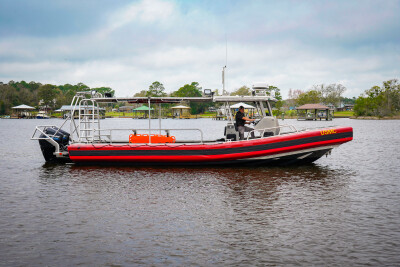The largest federal Gulf of Mexico offshore lease offering in history drew yet another cautious response from industry, with $124.7 million in winning bids for 815,403 acres.
Yesterday's lease sale was another sign the offshore industry continues to bump along the bottom of the downturn, as 33 companies participated, including Chevron, Royal Dutch Shell and Total SA. The Trump administration had plugged the record lease offering of 77 million acres, far more than previous sales, as part of its goal of U.S. “energy dominance.”
But the federal Bureau of Offshore Energy Management attracted little more this time than the $121 million in winning bids for the last Gulf lease sale, when 30 companies took up 508,096 acres in August 2017. At an average $153 per acre the March 2018 bids are well below previous price averages.
It has been a long fall from the boom years, like March 2012 when 80 companies bid a combined $352 million in two federal lease sales. Back then there was still a lot of interest in shallow water leases as well.
Recognizing the tough economic conditions facing shallow water operators in today’s market, the Department of Interior set a 12.5% royalty rate for leases in 200 meters or less depth, down from 18.75%. But Interior officials pulled back from an early proposal to offer the same reduction for deepwater leases.
“Today’s lease sale is yet another step our nation has taken to achieve economic security and energy dominance,” said Joe Balash, assistant secretary for land and minerals management at the Department of Interior, in announcing the sale results. “Today’s results will help secure high-paying offshore jobs for rig and platform workers, support staff onshore, and related industry jobs, while generating much needed revenue to fund everything from conservation to infrastructure.”
A day before the sale held in New Orleans, the National Ocean Industries Association had expressed hope that the historic scope of lease offerings, the shallow water royalty incentive, and slightly improving market conditions might bring a big turnout. NOIA president Randall Luthi still sounded an optimistic note after the sale, saying the bids “show a promising trajectory towards the future.”
“While the bidding activity today reflects improving, yet still lower than desired commodity prices, both the number of bids submitted and the total amount of high bids received are up compared to the August 2017 sale figures,” Luthi said in a prepared statement.
“Bonus bids are an indicator of the ability and confidence of producers to invest in the Gulf of Mexico. These are not new fields, and producers are attempting to pick the best of what is left. From that view, the bids demonstrate a solid commitment by the oil and natural gas industry to continue to invest in U.S. offshore energy and U.S. jobs.”
Luthi stressed that companies are looking globally for their next opportunities, and said “the United States must continue to evaluate how to keep the Gulf of Mexico and other parts of the U.S. outer continental shelf attractive in light of competition from Brazil and Mexico.”
Lease Sale 250, was the second offshore sale held under the National Outer Continental Shelf Oil and Gas Leasing Program (National OCS Program) for 2017-2022 drafted under the Obama administration. The plan has scheduled 10 region-wide lease sales for the Gulf, two each year including all available blocks in the combined Western, Central, and Eastern Gulf of Mexico Planning Areas.
In January Secretary of the Interior Ryan Zinke announced a draft proposed program for a new national OCS program for years 2019-2024, potentially including most of the U.S. shelf areas that were taken out of consideration in the final months of the Obama administration.
A 60-day public comment period for the draft ended on March 9, and BOEM will develop and publish a proposed program for public comment later this year, followed by the proposed final program expected in 2019.
Meanwhile, the 2017-2022 OCS plan will go forward until the new program is approved. It will be a rocky road for the Trump administration, with states on both the Atlantic and Pacific coasts readying their own legislative measures to stymie any offshore oil and gas development near their shores.
Lease Sale 250 included 14,474 unleased blocks, located from three to 231 miles offshore, in the Gulf’s Western, Central and Eastern planning areas in water depths ranging from nine to more than 11,115 feet (three to 3,400 meters).





